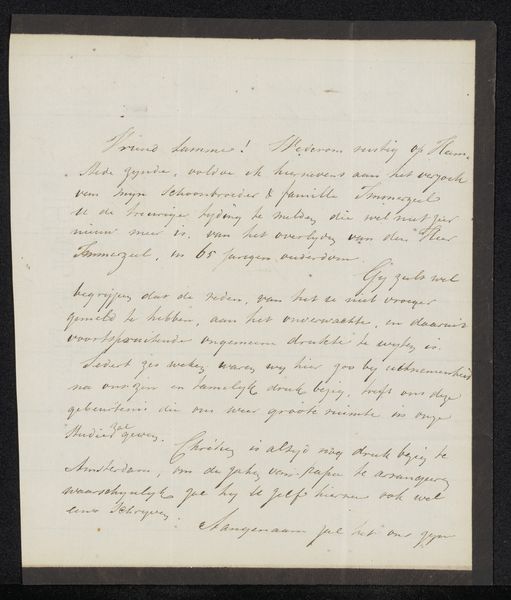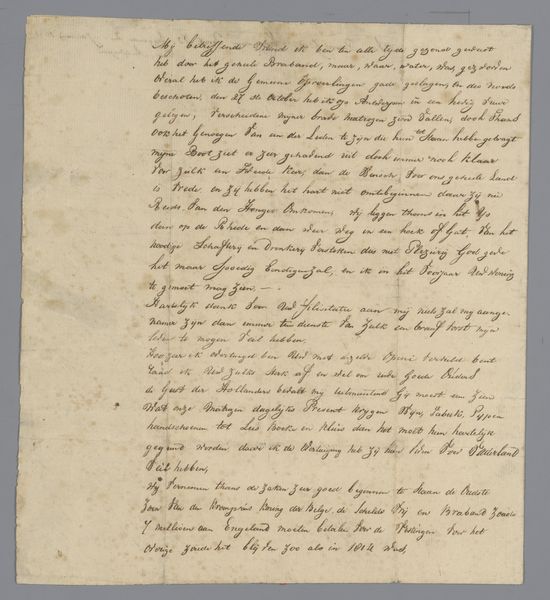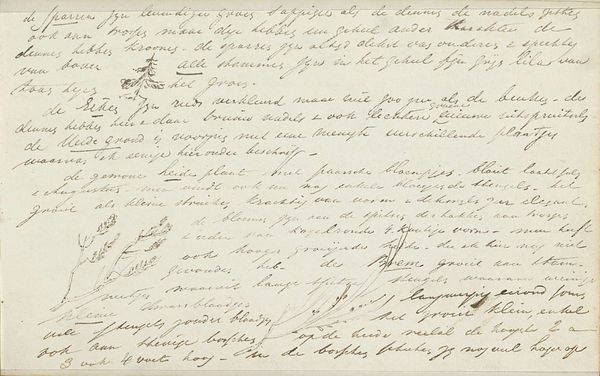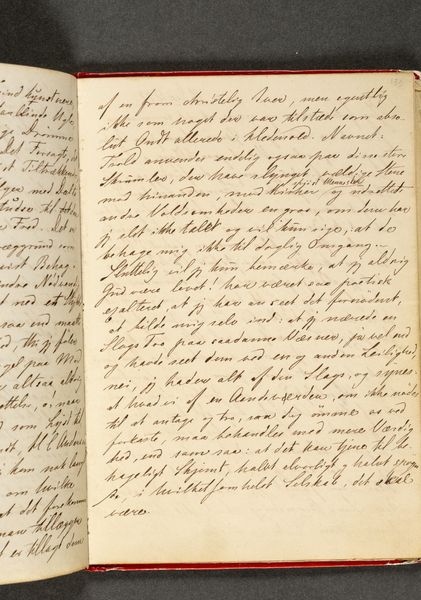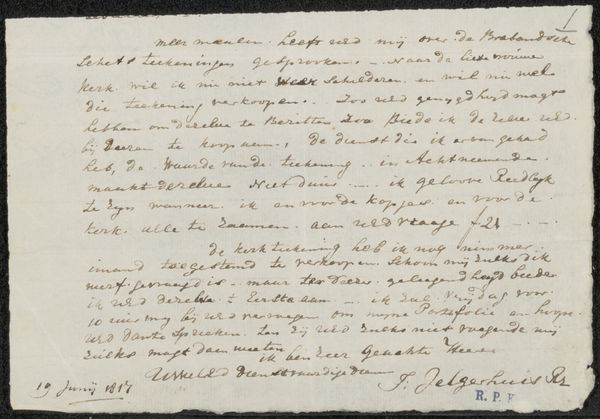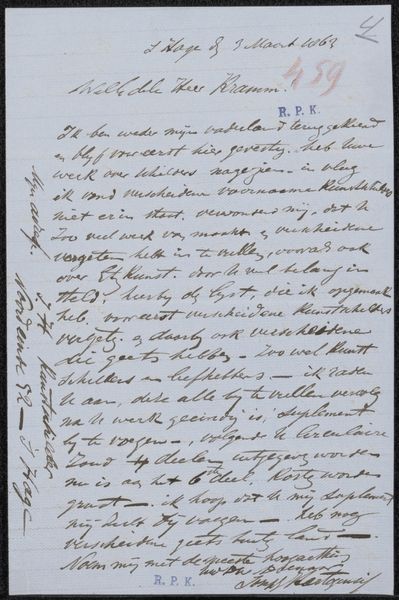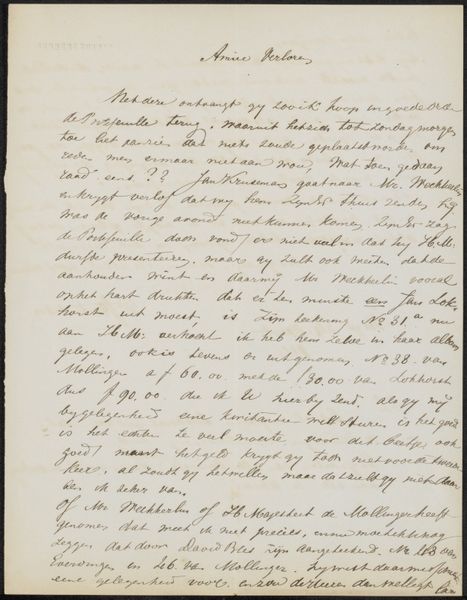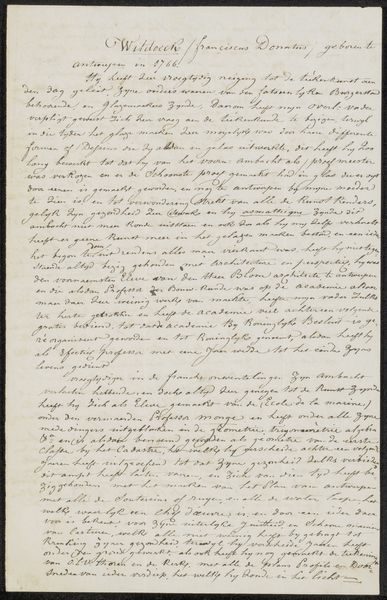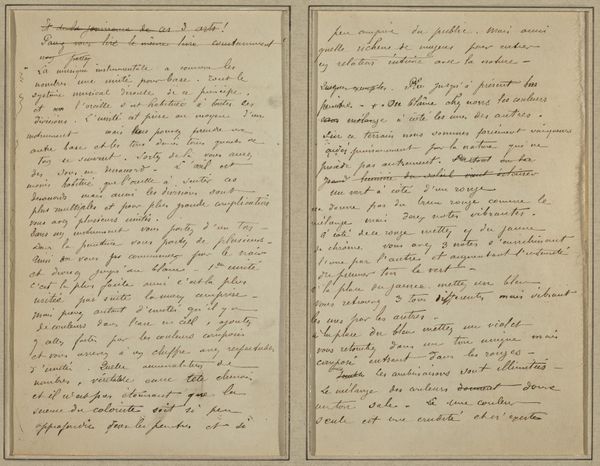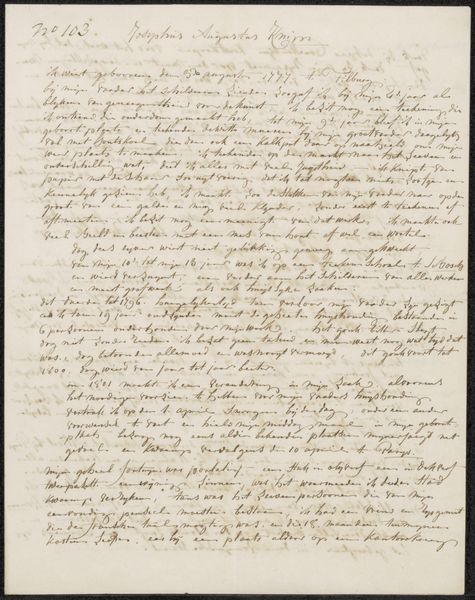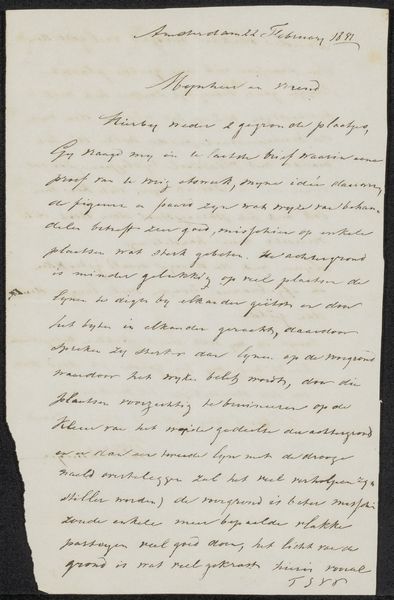
Copyright: Rijks Museum: Open Domain
Editor: We're looking at a drawing entitled "Gedicht naar Thomas More door Berghuis," created sometime between 1848 and 1854 by Christian Heinrich Gottlieb Steuerwald. It's a striking example of handwriting on aged paper with visible textile fibers, lending a sense of fragility. What captures your attention about this work? Curator: Considering the timeframe, this piece lands squarely in the Romantic period, a time deeply engaged with concepts of national identity and cultural heritage. The choice to hand-write and illustrate a poem referencing Thomas More, a figure known for his complex relationship with political power, speaks to the role art played in expressing and shaping socio-political sentiment. I'm curious, how does the act of painstakingly transcribing a poem by hand contribute to its meaning in your eyes? Editor: I suppose handwriting personalizes the message, gives it more emotional weight than if it were simply printed. But is there a specific political reading we can draw here? Curator: Given More's martyrdom and his opposition to Henry VIII, referencing him in this context might suggest veiled commentary on contemporary power structures. The artist is engaging with a historical narrative to perhaps subtly critique his own time. Remember, art institutions and salons served as critical spaces for the negotiation of social and political ideologies through the medium of culture. Do you see evidence that points to Romantic-era politics in the composition of the piece? Editor: I see now how a simple handwritten poem becomes something far more intricate. It reflects a desire to connect to a broader historical and political landscape, even under potential constraints. Curator: Exactly! It’s fascinating to see how personal expression and political undertones intertwine in such a seemingly unassuming artwork. It demonstrates the powerful and sometimes subversive role of art in shaping public consciousness. Editor: This has really changed the way I look at this. It's no longer just pretty handwriting. Curator: And that is precisely what makes art history so enriching – uncovering these layered narratives and understanding the social and political currents that informed their creation.
Comments
No comments
Be the first to comment and join the conversation on the ultimate creative platform.
